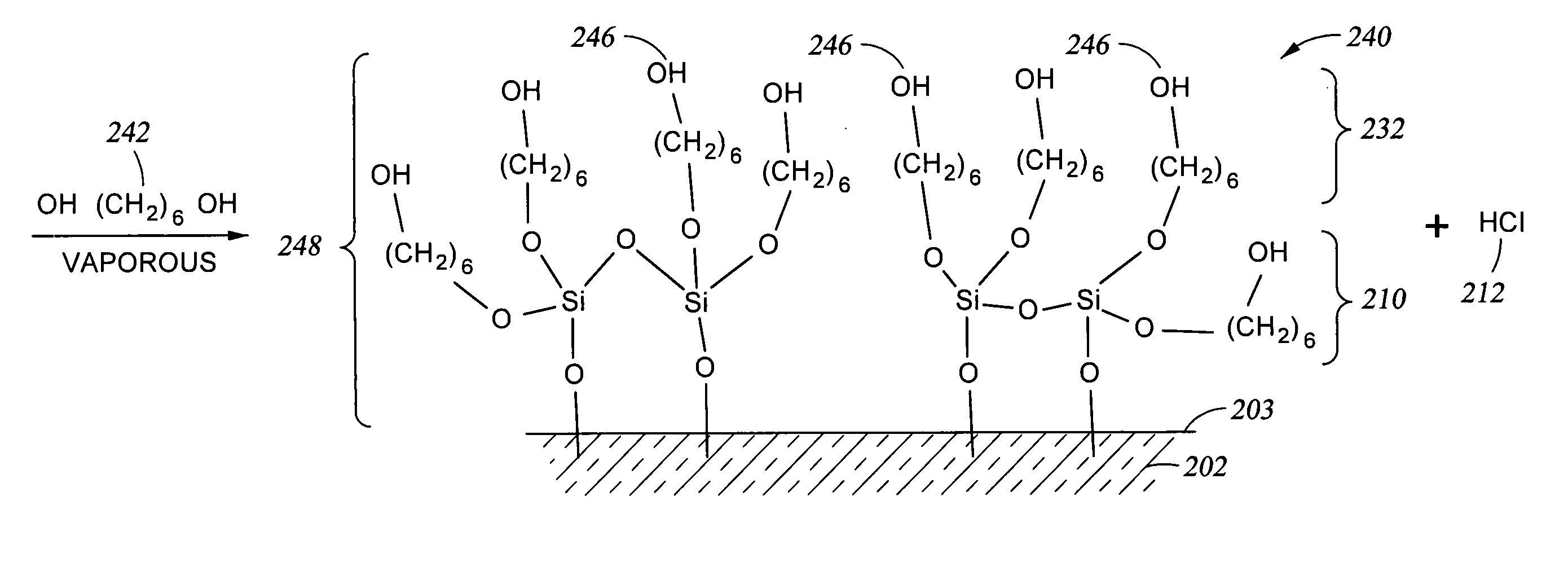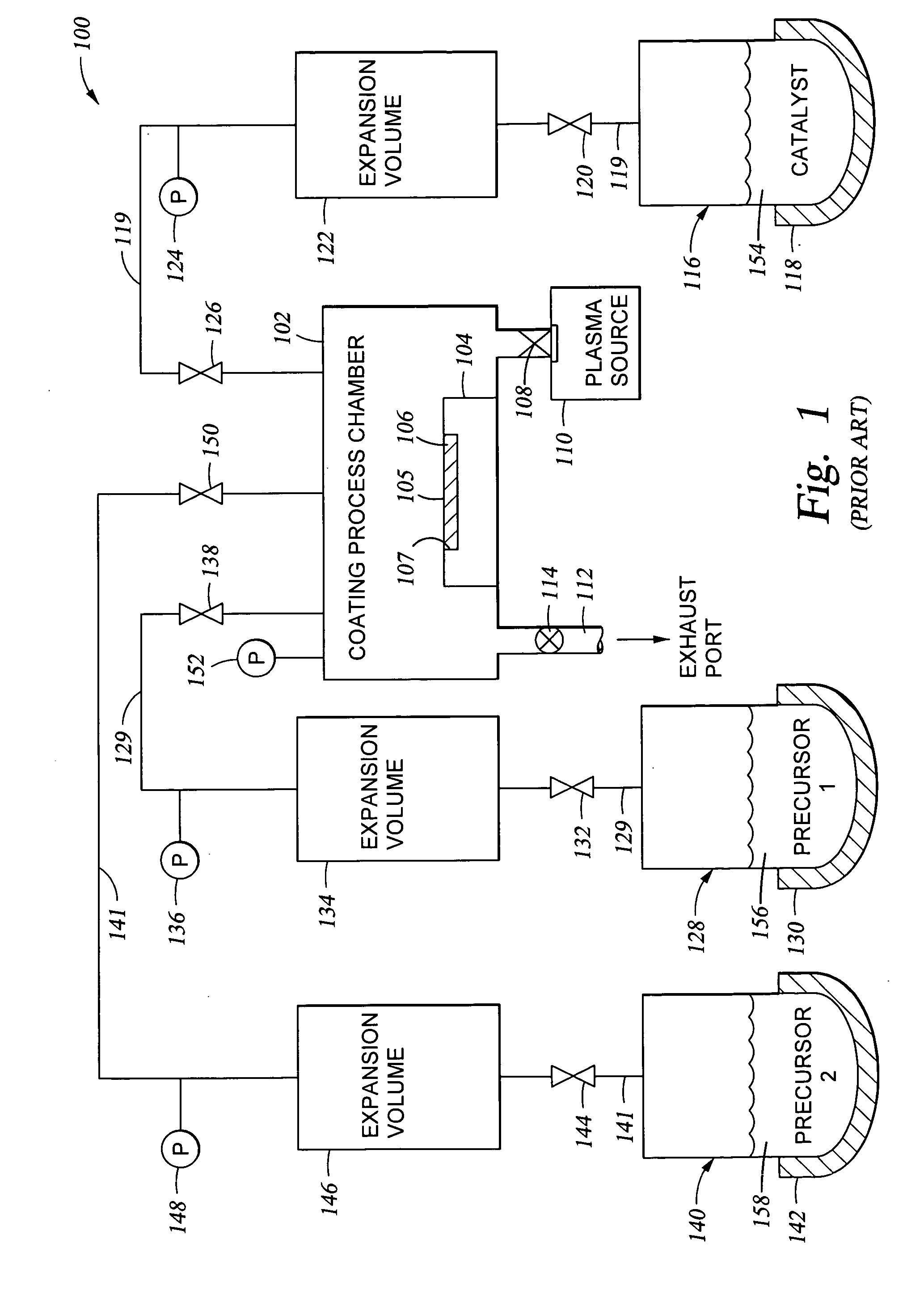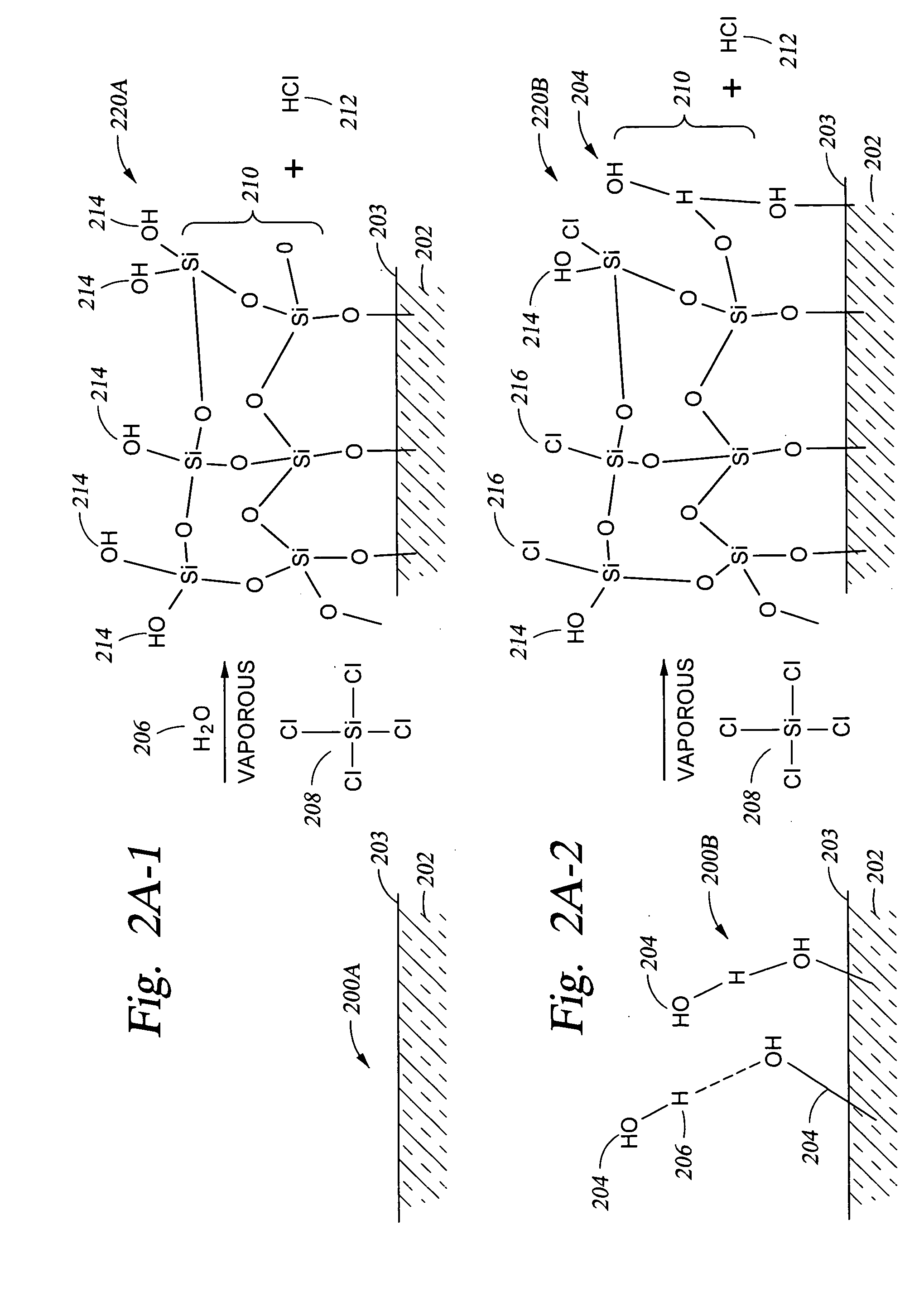Vapor deposited functional organic coatings
- Summary
- Abstract
- Description
- Claims
- Application Information
AI Technical Summary
Benefits of technology
Problems solved by technology
Method used
Image
Examples
example one
Controlling the Relative Quantities of Hydroxyl and Halogen Reactive Sites on a Substrate Surface
[0067] A technique for adjusting the number of OH reactive sites available on the surface of the substrate is to apply an oxide coating over the substrate surface while providing the desired concentration of OH reactive sites available on the oxide surface. In particular, in FIG. 2A-1 structure 200A which has no —OH groups 204 present on the substrate surface 203. A chlorine-containing compound, such as the silicon tetrachloride 208 shown, and water 206 are reacted with the surface 203, either in sequence (typically with the chlorine-containing compound charged to the reactor first) or simultaneously to produce the oxide layer 210 shown on surface 203 of substrate 202 and byproduct HCl 212. When the quantity of water vapor 206 (the water vapor partial pressure in the process chamber) present relative to the amount of silicon tetrachloride gas 208 (the silicon tetrachloride vapor partial...
example two
Demonstration of Control of Concentration of Halogen Reactive Sites on a Substrate Surface
[0069] In the exemplary embodiments discussed below, a silicon oxide coating was applied over a substrate. The substrate was a silicon substrate, which was first treated with an oxygen plasma in the presence of residual moisture which was present in the process chamber (after pump down of the chamber to about 20 mTorr) to provide a clean surface (free from organic contaminants). Because the substrate was silicon, this treatment also provides —OH groups on the silicon surface. A typical plasma treatment process is one carried out in the processing chamber apparatus described herein using a remotely generated plasma. The remotely generated plasma is generated from a plasma source gas containing oxygen at a volumetric percentage ranging from about 50% oxygen up to about 100% oxygen. An RF power is applied to the plasma source gas using techniques known in the art to generate a plasma. In the pres...
PUM
| Property | Measurement | Unit |
|---|---|---|
| Temperature | aaaaa | aaaaa |
| Temperature | aaaaa | aaaaa |
| Temperature | aaaaa | aaaaa |
Abstract
Description
Claims
Application Information
 Login to View More
Login to View More - R&D
- Intellectual Property
- Life Sciences
- Materials
- Tech Scout
- Unparalleled Data Quality
- Higher Quality Content
- 60% Fewer Hallucinations
Browse by: Latest US Patents, China's latest patents, Technical Efficacy Thesaurus, Application Domain, Technology Topic, Popular Technical Reports.
© 2025 PatSnap. All rights reserved.Legal|Privacy policy|Modern Slavery Act Transparency Statement|Sitemap|About US| Contact US: help@patsnap.com



